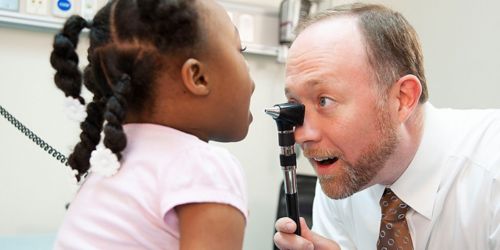St. Jude Family of Websites
Explore our cutting edge research, world-class patient care, career opportunities and more.
St. Jude Children's Research Hospital Home

- Fundraising
St. Jude Family of Websites
Explore our cutting edge research, world-class patient care, career opportunities and more.
St. Jude Children's Research Hospital Home

- Fundraising
Hydroxyurea: How much is too much? Sickle cell study reveals individualized dosage leads to decreased hospitalizations

Jeremie Estepp, MD, studies and treats different blood disorders, including sickle cell disease.
How to limit blood sickling
Hydroxyurea has proven to be one of their major breakthrough medications now recommended to all children with the sickle cell disease. Hydroxyurea inhibits blood cell sickling, which in turn reduces treatment time in the hospital. But there has been some disagreement on dosage to accomplish the desired outcome.
How much is enough?
When children and adolescents with sickle cell disease take the medication Hydroxyurea, they often find themselves able to enjoy life a bit more and make far fewer visits to the hospital. Still, there is a debate among doctors about how much of the medication is enough. A dosage controversy remains, but a St. Jude study has shown real promise in answering the important question: How much is enough? It turns out there is a good case for the answer: More is better. St Jude’s Jeremie Estepp, MD, Hematology, recently authored a federally-funded study of 230 St. Jude patients that showed it was a better idea to monitor individual patient fetal hemoglobin (HbF) levels using a gradual dose-escalation than to prescribe a standard dose based on the patient’s weight. With each patient having a different tolerance for the medication, it meant the dosage could vary even for those patients near the same weight. Instead of developing a standard, the key was to increase the dose to get the highest HbF levels possible. Being able to cross the 20% mark proved to have significant benefits. The study revealed that children and adolescent patients whose HbF stayed above 20% saw at least a two-fold decrease in hospitalizations related to sickle cell disease. The four-year analysis showed only 2% of the participants developed mild and temporary neutropenia, a shortage of white blood cells, but the average HbF levels rose from 9.7% to 21.7% using the method.
How does Hydroxyurea work?
Hydroxyurea is an oral sickle cell medication that helps increase the amount of fetal hemoglobin in red blood cells, reducing the occurrence of abnormally or “sickled” cells in the bloodstream. The treatment also reduces white blood cell levels that can encourage inflammation in sickle cell patients. Determining the dosage to reduce sickling and maintain safe levels of white blood cells is part of the challenge of the St. Jude study.
What is sickle cell disease?
Blood cells normally move through the veins and arteries of the body with ease, delivering oxygen to vital organs that keep our bodies functioning normally. The reason the cells glide easily through the body has a lot to do with their shape and texture. Sickle cell disease causes the normally rounded cells to become abnormally shaped – like a banana or a sickle, hence the name. When these improperly formed cells attempt to traverse the blood vessels they get stuck, hindering blood flow. This leads to swelling, fever, fatigue, issues with breathing and severe pain throughout the body.






